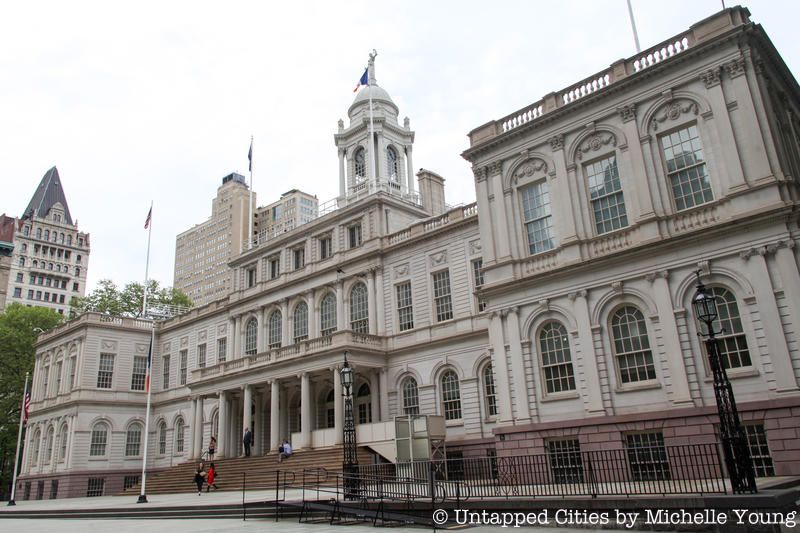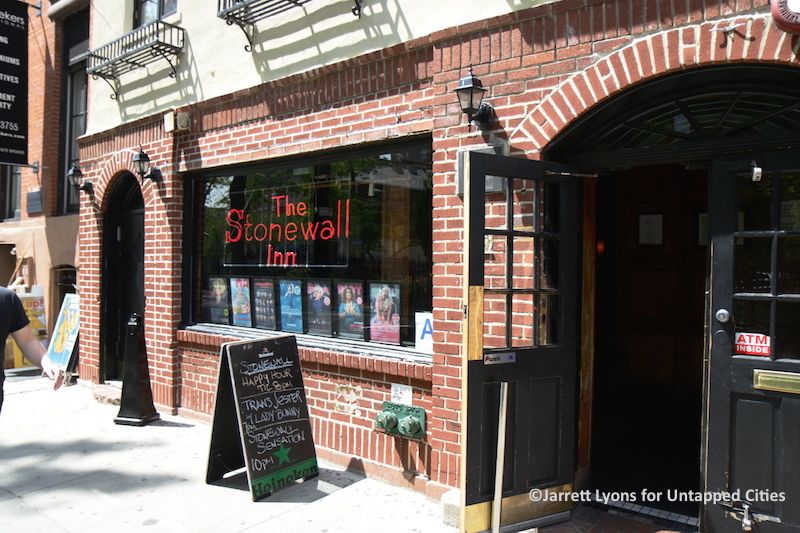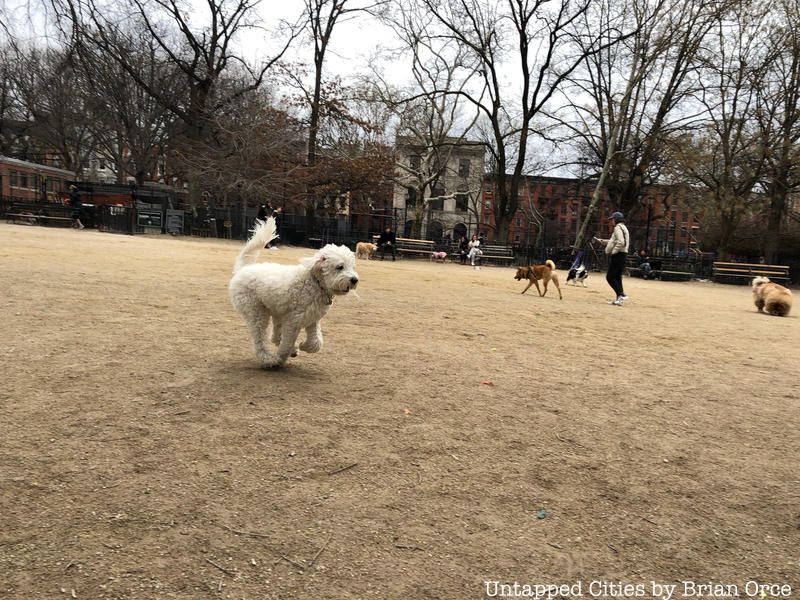Last-Minute NYC Holiday Gift Guide 🎁
We’ve created a holiday gift guide with presents for the intrepid New Yorker that should arrive just in time—



Madison Square Park, the site of the Rocking Chair Riots of 1801
New York has a long history of social and political movements that have engendered change in the city’s political and social landscape. Much of this change has come from rioting, sometimes over issues that seem archaic to us today – like rocking chairs and flour, for example. Still, many neighborhoods throughout New York City have succumbed to violence to achieve change. These riots were motivated by life and death situations, racial and class tension, activism, and even the better portrayal of Shakespeare characters.
Here is a list of ten notorious riots that have taken place in New York City:
It was a lot harder to take a load off in the New York City parks of 1801. Streetcars made traveling easier for various classes to co-mingle into public spaces that catered to the rich and English Businessman Oscar F. Spate decided to start charging for seats in high-end rocking chairs.
Through a deal with the Parks Department Commissioner, Spate assumed the rich would want to distinguish themselves from the poor in the changing landscape of the parks. Things got heated in the summer, however, when people started to refuse to pay for the shady placed rocking chairs. Park-goers became forceful with attendants who were tasked with collecting the cash, and eventually, the Rocking Chair Riots ensued.
After several days of rioting, the Parks Commissioner canceled Spates’s contract. Though Spate tried to take the commissioner to court for this, the Judge ruled in favor of the people’s right to rock without a fee.
In the midst of the depression of the 1830s, a meeting was called to protest the rising price of flour and grain. Stores, specifically Eli Hart & Company, had jacked up their prices and the working class wanted it returned to original pricing. The group stormed Eli Hart & Company, a store that sold flour by the barrel, and when authorities tried to stop them, the workers threw ice and rocks at them and took over a second warehouse, before the National Guard was called to stop them.
The riot was ultimately unsuccessful: flour prices remained at the high price, and the depression continued until 1843.

The Draft Riots of 1863 are regarded as the deadliest racially incensed insurrection in American history, aside from the Civil War. Image from Library of Congress
The worst riots in American History up until the Civil War point were the Draft Riots of 1863. In the midst of the Civil War, working-class Irish immigrants shared a growing resentment for laws that allowed the upper classes to avoid being drafted to fight for the Union. When the Union Army attempted to draft in New York for the second time, four days of rioting occurred, spanning across the city.
Among the locations rioted was The Provost Marshall’s Office when on July 13, five-hundred protesters burned the building to the ground. The nearby Bull’s Head hotel which allegedly denied the subversives alcohol was also burned. A nearby orphans asylum for black orphans was also burned by white protesters, who feared job competition from the black population. The children were reportedly smuggled out as the building burned.
Check out more battlefields of the Draft Riots.

On August 13th, 1900 gave rise to the worst rioting New York had seen since the Draft Riots. Twenty-year-old May Enoch, a black woman, was waiting for a friend outside a bar in the Tenderloin neighborhood of Manhattan when Robert Thorpe, a plainclothes police officer accused her of prostitution.
When Thorpe tried to take her in, her companion, Arthur Harris, heard her yelling. Harris, who didn’t know Thorpe was a police officer, got into a physical altercation resulting in Harris getting clubbed in the head. He responded by stabbing Thorpe three times in the stomach. Thorpe died the next day.
Subsequent vigils for the fallen officer resulted in the culmination of the racial tension and after another altercation brewed and a gun was pulled, riots ensued. There were somehow no fatalities in this riot, but there were multiple reports of police brutality. No police offers were charged and Harris was sent to prison at Sing-Sing, where he later died.
To say that the Astor Place Riots were dramatic would be an understatement. The violent events that followed the May 10, 1849 performance of Macbeth left 20 dead and 120 injured. Tension grew from the very inception of the opera house Astor Place. Between the working class arts center of the Bowery and the upper-class arts center of Broadway, the formal opera house was a contested space.
This came to a head when celebrity actor and Shakespearean expert, William Charles McCready performed Macbeth. To the lower-class Americans, this British actor was everything the Anglophile upper-class New Yorkers represented. But this wasn’t a case of Shakespeare or no Shakespeare. They were championing Edwin Forrest, an American actor who specialized in Shakespeare.
Jeers were shouted from the audience during McCready’s run and sides were taken to an official level. The Mayor supported the upper-class point of view, while Tammany politicians supported the lower classes. Everything came to a head during the March 10th performance, when 10,000 people flooded the streets around the opera house. It was the first time state militia was called on citizens. They shot into the crowd with most casualties in the lower classes. McCready escaped unharmed and in disguise through a back entrance of the theater.

In 1860, Mayor Fernando Wood, who would later motion for New York City to secede from the Union, was under scrutiny for selling police titles. The state got involved by creating a Metropolitan police and attempted to disband the Municipal police force, but they refused. For two months the Municipal and the Metropolitan begrudgingly co-existed until the street commissioner needed to be replaced.
The Mayor and the Governor disagreed on who should replace the recently dead commissioner. The disagreement resulted in the Police Riots of 1857 at City Hall between the two factions of the police. After trying and failing to arrest Mayor Wood for any significant amount of time, The New York High court voted in favor of Wood and his Municipal police. Wood was voted out of office the following year.
New York was in the depths of the Great Depression in 1934 when desperate denizens flooded the taxi driving job market to make a quick buck. Unfortunately, the economics of this trend was not stable, as most of the city was tightening its belt, resulting in the Taxi Riots. Taxis became a luxury, diminishing the demands of the job market. Salaries were low enough to start a taxi driver strike and conditions became riotous by February of 1934.
Then-Mayor Fiorello Laguardia sided with the protesters and took away the billy clubs of police officers, but protests carried on for months. In 1937, the Haas Act was signed, which capped Taxi Medallions at 14,000, stabilizing income for drivers. Looking back, much of this story has harbingers of the current battle between ride-sharing programs like Uber and traditional Medallion taxi operators.
Harlem has also seen its share of riots, many resulting from racial violence towards people in the neighborhood. In 1935, a shop owner caught 16-year-old black Puerto Rican Lino Rivera shop-lifting a penknife from his store. The shopkeeper threatened to beat him, which was overheard by a gathering crowd who thought the shopkeeper actually beat Rivera. After a community organization demonstrated outside the store, riots and looting ensued.
In 1964, a white police officer shot and wounded an African-American soldier, Robert Bandy, arguing on behalf of a woman who was arrested for disorderly conduct. After a physical altercation, Bandy was shot and suffered superficial wounds. After false rumors spread that Bandy didn’t survive the shooting, riots broke out for two days.
James Powell, a 15-year-old was shot and killed by Police Lieutenant Thomas Gilligan on July 16, 1964. The shooting occurred in front of friends and other witnesses. As a result, six consecutive nights of rioting spread through Harlem and Bedford-Stuyvesant in Brooklyn.

In 1969 at the Stonewall Inn, a bar frequented by queer people, the patrons were regularly harassed by cops in the West Village neighborhood. On June 28th, the bar’s patrons fought back leading to two nights of rioting. In one account, recounted in Benjamin Heim Shepard recounts the camp style of rioting in his book Queer Political Performance and Protest: “Queer youth formed a Rockette-like kick-line and sang, “We are the Stonewall Girls,” as they thwarted riot cops.” The Stonewall Inn would be landmarked based on its social history in 2015. Check out more notable LGBT landmarks in NYC.

The first riots to occur in the East Village at Tompkins Square Park was during an 1874 depression. Workers demanded government help and public works programs to alleviate their crumbling livelihoods. Workers gathered in the park on January 13th. Police responded with force but the workers fought back. Panic spread throughout the rest of the day.
Tompkins Square was home to riots again in 1988 when police tried to enforce a 1 am curfew to discourage the massive numbers of homeless people living in the park. The police tried first on July 31st and returned on August 6th with force, sparking rioting.
Next, read about how a 19th-century mob of arsonists burned down the Staten Island Quarantine Hospital.
Subscribe to our newsletter